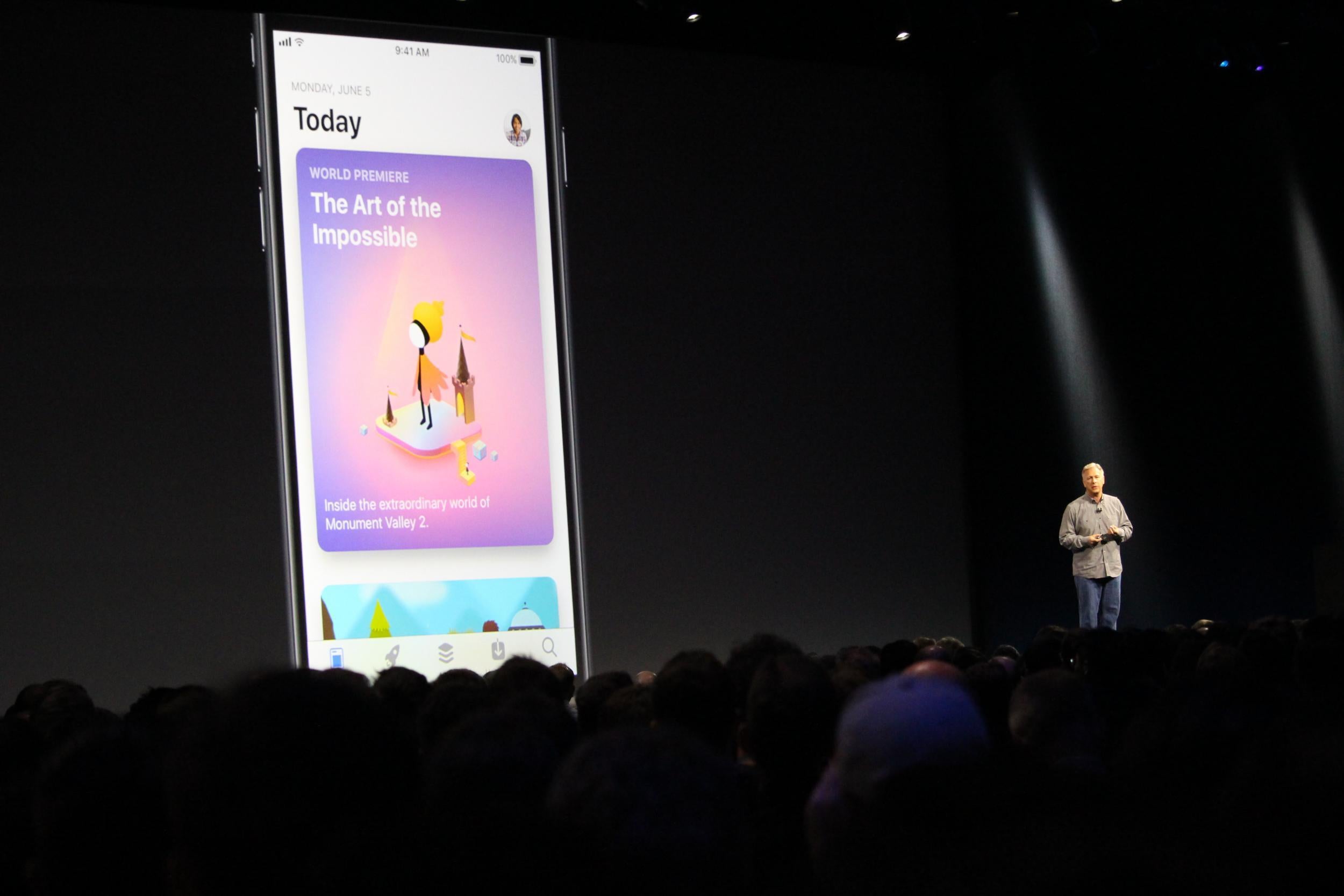Monument Valley 2: How ustwo made the sequel to Frank Underwood's favourite game
'How do you make games for everyone?'

Back in February, Apple CEO Tim Cook visited ustwo games in south London. The Independent talked to him then.
The original Monument Valley game had grossed over $15 million, and Cook came to see Monument Valley 2, which has been announced today.
I talked to the developers about how the games, new and original, came about and the importance of the Apple App Store in shaping ustwo games.
Gadget and tech news: In pictures
Show all 25Sinx (John Sinclair, one of ustwo’s two co-founders alongside Matt “Mills” Miller), saw the importance of the App Store straight away. “I personally recognised that I was never massively into games, Dan's a real gamer and came from the games industry. But I recognised that the beauty of this App Store is that we, with no games experience, could have a distribution channel. We could put something out there. We wanted to make the core content.
Dan Gray, Head of Studio at ustwo games, had come from a hardcore gaming company, Hello Games, and brought a new approach to ustwo. “The thing I was always most interested in is how do you make games truly for everyone. So, the true test as we developed it, was we’d say, ‘I'm going to put this device in your hand and I'm not going to tell you anything. And then we're going to tell you that there's nothing that you can do that is wrong.’ ”
Then they recorded people using it for hundreds of hours, a freedom afforded because there was no deadline for which they had to have it ready. Gray again: “The only thing these guys said was we've put the right team in place, you've got the right environment, the only thing we care about is you make something that you guys are proud of and lots of people love.”
In the process, they hardly ever called Monument Valley a game. “We mostly said interactive entertainment or experience, because game makes it sound like something that has scores and leaderboards and achievements and lives. We wanted to take all that out of the equation,” Gray explains. It also meant they could appeal to non-gamers and to a wide age range.
And the App Store offered a useful business model. Sinx says, “This sort of free to play gaming definitely wasn't interesting us. We wanted to believe in premium. We want people to pay up front. We think that that means that people probably care more. And all credit to Apple as well, I mean, they really believed in what we were trying to make, that this was the ultimate coffee table experience. We asked ourselves, what would Apple have made if they made games? We'd like to believe that is what Monument Valley was. And it did incredible for us. I don't think it was a shock but I think we probably didn't expect it to be so transformative in terms of the reception. Still to this day it sells really well.”
As Mills confirms, “I'm not driven by the financial aspect at all but of course it helps. I think Monument Valley made us more money in the first year than we had done for years before. When you get it right on the App Store, fuck me, you can get it right.”
“Now obviously we're making a big bet on the follow-up game which isn't just a sequel, it is more than that. And we just want to continue to innovate around that,” Sinx adds.
The plot of the new game sees the player guide a mother and her child as they embark on a journey. As in the first game, there’s impossible architecture and pathways, with puzzles to be solved.
Gray says, "I'd say one of the differences here is the bigger emphasis on relationships and emotional impact. Watching the two characters evolve over the experience, not just in terms of their interactions, but the gameplay was a hugely gratifying task. Some of the later chapters are also quite a departure in terms of visuals and interactions, and altogether I'd say we've delivered a game that exceeds Monument Valley in every area."
The original game even featured in the TV series House of Cards. It was not a product placement, though, ustwo didn’t pay for the exposure. Gray says, “I always want to say it was a well-though-out strategic decision from us. But it wasn’t. This is the good thing about making something beautiful and something that people want to share. The reality of the situation is there was a player who downloaded the game and loved it. They recommended it to a friend and it just happened to be that the friend was the writer on House of Cards Beau Willimon. He noticed similarities between his own character development and saw our game as a perfect plot device to create parallels between what he was thinking and what our own character was trying to do in the game.
“When they originally rang us up I thought it was a bit of a joke. I didn't think it was really them. They said can we use your game in the show and they wanted us to sign a waiver and that was it. Sometimes in television, video games are portrayed in a way that's negative or violent. We knew our game wasn't like that so they sent us the script. I think for the week that the series came out we had about 10 times sales. In fact, someone worked out that it was more effective than a Super Bowl halftime advert.”
Subscribe to Independent Premium to bookmark this article
Want to bookmark your favourite articles and stories to read or reference later? Start your Independent Premium subscription today.

Join our commenting forum
Join thought-provoking conversations, follow other Independent readers and see their replies